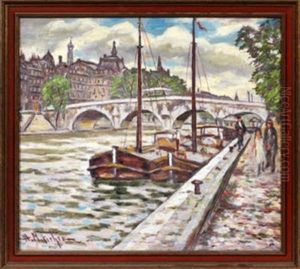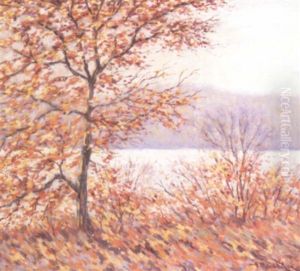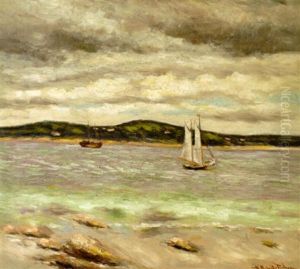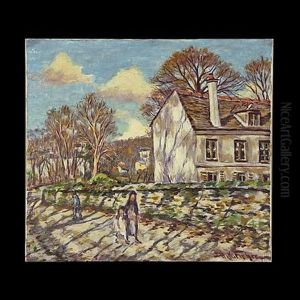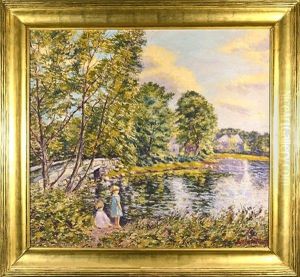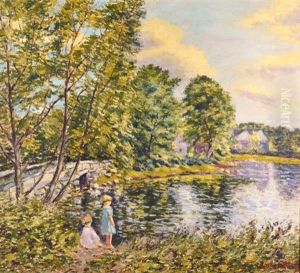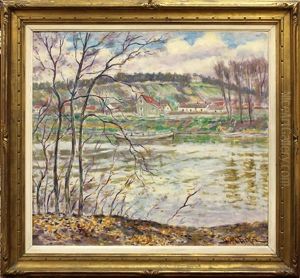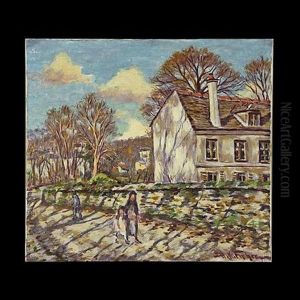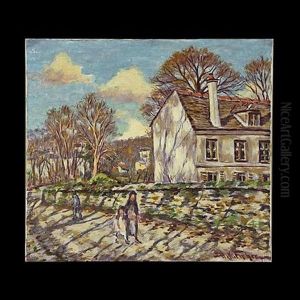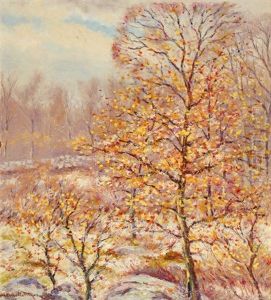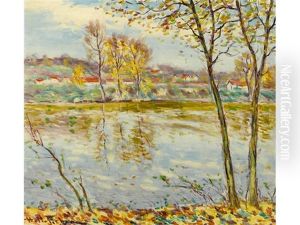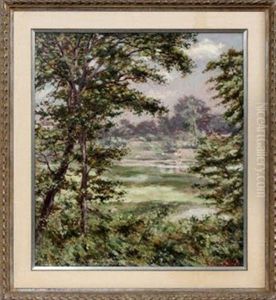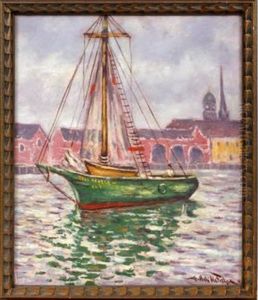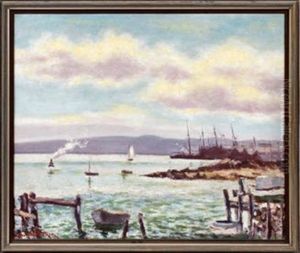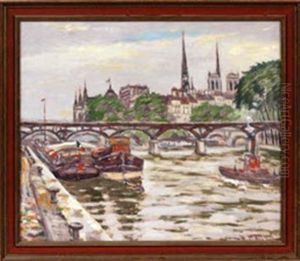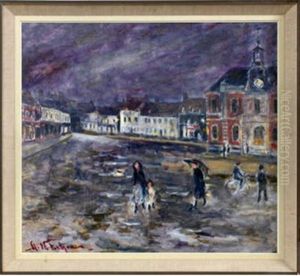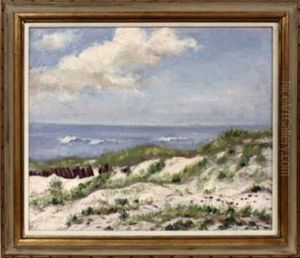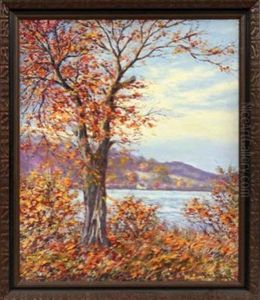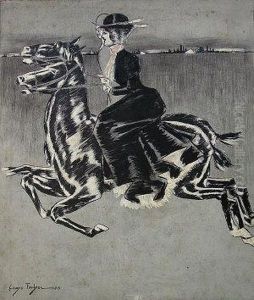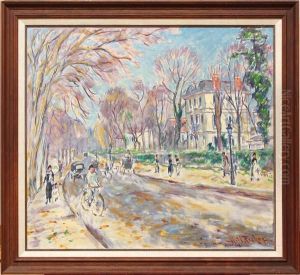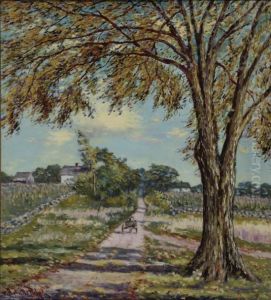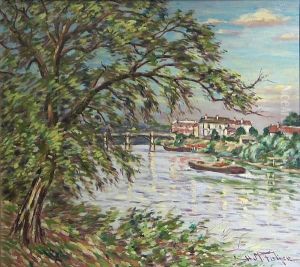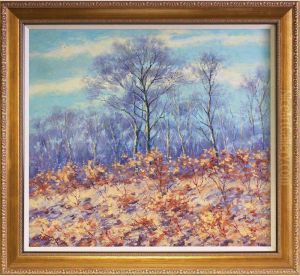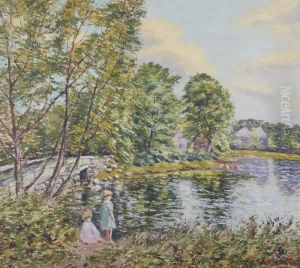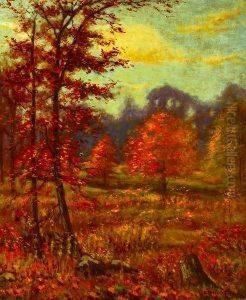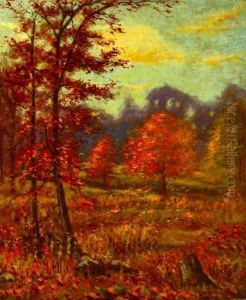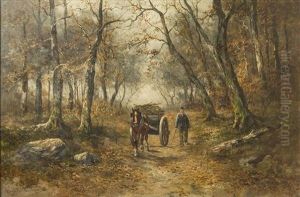Hugo Melville Fisher Paintings
Hugo Melville Fisher was an American landscape painter born on July 28, 1878, in Brooklyn, New York. He was the son of Hugo Anton Fisher, a landscape painter who had immigrated from Bohemia and was well-known in the art circles of his day. Growing up in a creative environment, Hugo M. Fisher was exposed to the arts from a young age, which likely had a significant influence on his decision to pursue a career in art.
Fisher studied at the California School of Design, which was an important institution in San Francisco for aspiring artists at the turn of the century. His training at this institution grounded him in the techniques and styles that would characterize his work. He was particularly known for his watercolor landscapes, which often depicted the natural beauty of the California coast and countryside.
Throughout his career, Fisher exhibited his work widely. He was a member of the California Water Color Society and participated in various exhibitions, including those at the San Francisco Art Association, the Oakland Art Gallery, and the Society of Western Artists. His landscapes were well received, and he developed a reputation for his ability to capture the subtleties of light and atmosphere in his depictions of the American West.
Fisher's work is representative of the early California plein air painting tradition, which focused on outdoor painting that captured the ephemeral qualities of light and the color of the landscape. His paintings are characterized by a loose, impressionistic style, with a vibrant palette and dynamic brushwork. He often painted en plein air, directly from nature, which allowed him to record his immediate impressions of the scene before him. This method was an essential part of the plein air movement, which sought to move away from the academic studio painting of the time to embrace a more direct and spontaneous approach to capturing the landscape.
Hugo Melville Fisher passed away on January 1, 1946. His work continues to be appreciated by collectors and art enthusiasts, particularly those with an interest in early California art and the plein air tradition. His paintings are part of the collections of several institutions, and his legacy lives on as an important figure in the history of American landscape painting.
